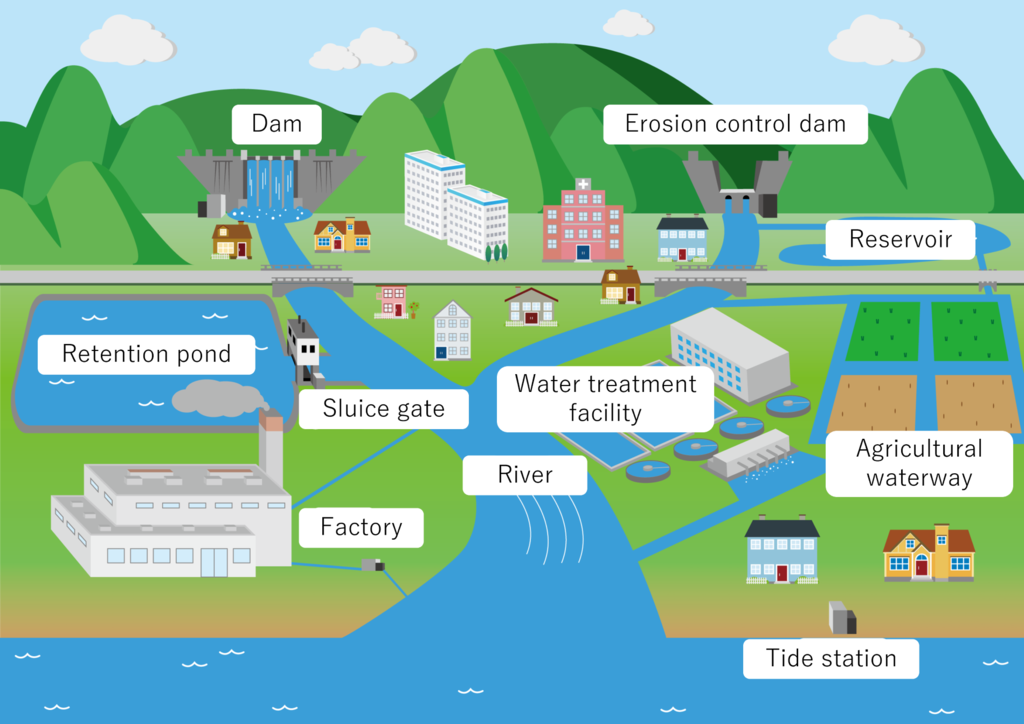ICT Solutions for Agricultural Water Management
Information and Communication Technology (ICT) is revolutionizing agricultural water management, offering innovative solutions to improve efficiency and sustainability in irrigation practices.
As reported by the Food and Agriculture Organization (FAO), ICT tools facilitate the collection and analysis of data on water sources, enabling farmers and water authorities to make more informed decisions about water allocation and usage in agriculture.

Impact of ICT Management
ICT-based management in agriculture serves as a transformative tool to enhance efficiency, sustainability, and decision-making across farming operations.
By integrating technologies like IoT, remote sensing, and data analytics, ICT enables precise monitoring and control of key agricultural variables such as water usage, soil health, and crop conditions.
This approach not only optimizes resource allocation but also reduces costs and environmental impact.
For instance, precision irrigation systems leveraging ICT can cut water usage by up to 50% compared to traditional methods while boosting crop yields.
The effects of ICT-based management extend beyond operational improvements. It empowers farmers with real-time access to critical information, such as weather forecasts, market prices, and pest alerts, fostering informed decision-making.
Additionally, ICT tools facilitate knowledge sharing, capacity building, and access to financial services like insurance or credit tailored to agricultural needs.
These advancements contribute to higher productivity, improved livelihoods for smallholder farmers, and the promotion of sustainable farming practices.
ICT Water Management Tools
ICT-based agricultural water management encompasses a range of technologies and systems designed to optimize water use in farming.
Some key types include:
- Smart irrigation systems: These use soil moisture sensors, weather data, and crop models to automate irrigation scheduling and deliver precise amounts of water.
- Remote sensing and GIS: Satellite imagery and geographic information systems help track water usage, forecast river levels, and map soil moisture variations across fields.
- Mobile apps: Smartphone applications provide farmers with real-time data on soil conditions, weather forecasts, and irrigation recommendations.
- Automated canal systems: ICT controls gates and valves in irrigation canals to regulate water flow and minimize distribution losses.
- Evapotranspiration networks: These measure water loss from soil and plants to inform irrigation decisions across regions.
By integrating these technologies, farmers can significantly reduce water consumption, increase crop yields, and improve overall agricultural sustainability.
Challenges and Future Outlook
ICT-based management in agriculture faces several challenges, including limited technical skills, insufficient infrastructure, and inadequate funding in developing countries.
The digital divide remains a significant barrier, with many smallholder farmers lacking access to or familiarity with advanced technologies.
Additionally, concerns about data privacy and security in digital agricultural systems persist.
Despite these obstacles, the future of ICT in agriculture looks promising.
Emerging technologies like AI-powered drones, blockchain for supply chain transparency, and big data analytics are set to revolutionize farming practices.
The integration of IoT devices and smart sensors will enable more precise resource management and automated decision-making.
As ICT solutions become more accessible and user-friendly, they have the potential to bridge knowledge gaps, improve market access for small-scale farmers, and contribute to more sustainable and resilient agricultural systems.
Water Level Sensor Adoption
Water level transmitters are gaining popularity in agricultural water management due to their ability to provide accurate, real-time data on water levels in various applications.
These devices offer significant potential for widespread adoption in farming practices, particularly as part of integrated ICT-based irrigation systems.
The popularization of water level transmitters in agriculture is driven by several factors:
- Improved accuracy and reliability: Modern transmitters use advanced technologies like radar and ultrasonic sensors to provide highly precise measurements.
- Cost-effectiveness: As technology advances, the cost of these devices is decreasing, making them more accessible to farmers of all scales.
- Integration capabilities: Water level transmitters can easily integrate with existing smart irrigation systems and IoT platforms, enhancing overall water management efficiency.
- Remote monitoring: Many transmitters offer WiFi or cellular connectivity, allowing farmers to access water level data from anywhere, improving decision-making and resource allocation.
As water scarcity becomes a growing concern in many regions, the adoption of water level transmitters is likely to increase, contributing to more sustainable and efficient agricultural water use practices.
Advantages of Radar Transmitters
Radar-type water level transmitters offer numerous advantages, making them a preferred choice for agricultural water management.
Their ability to provide precise, reliable measurements under challenging conditions is unmatched.
Unlike traditional sensors, radar transmitters are unaffected by environmental factors such as temperature fluctuations, pressure changes, or the presence of vapors, foam, or dust, ensuring consistent performance in diverse applications.
Key benefits include:
- Non-contact measurement: Radar transmitters operate without physical contact with water, reducing wear and tear, contamination risks, and maintenance needs.
- High accuracy and reliability: These devices deliver precise readings even in extreme conditions, such as high humidity or turbulent surfaces, ensuring optimal irrigation decisions.
- Versatility: Radar sensors can measure levels of liquids, solids, and slurries across various environments, from open reservoirs to enclosed tanks.
- Low maintenance: With no moving parts and robust construction, radar transmitters minimize downtime and operational costs.
- Long-range capability: Advanced radar systems can measure water levels in deep wells or large tanks with exceptional accuracy.
These advantages make radar-based water level transmitters an indispensable tool for improving efficiency and sustainability in agricultural water management.
Please feel free to ask us if you have any questions
or you want our support. ⇩⇩⇩
© Matsushima Measure Tech Co., Ltd.



